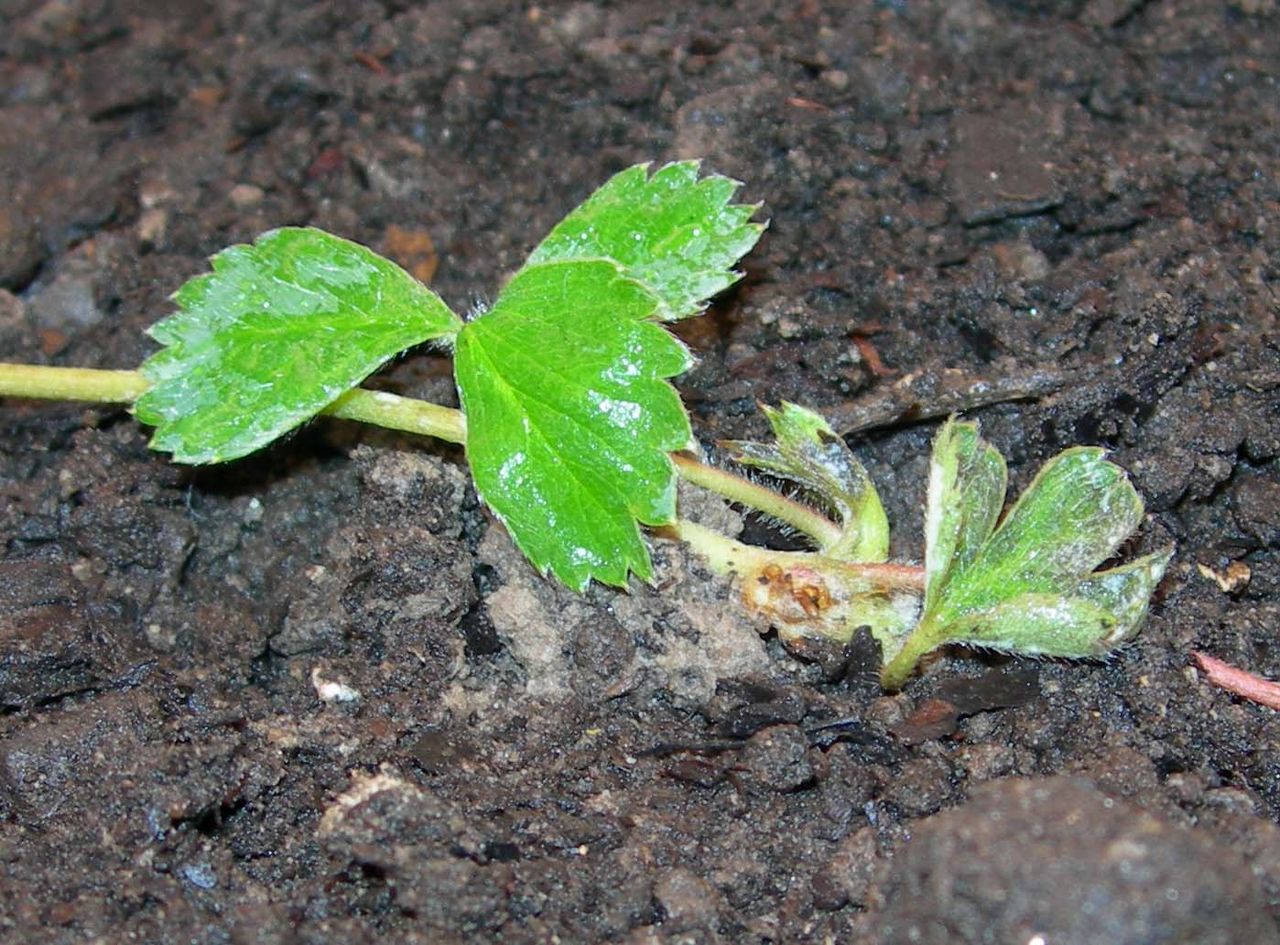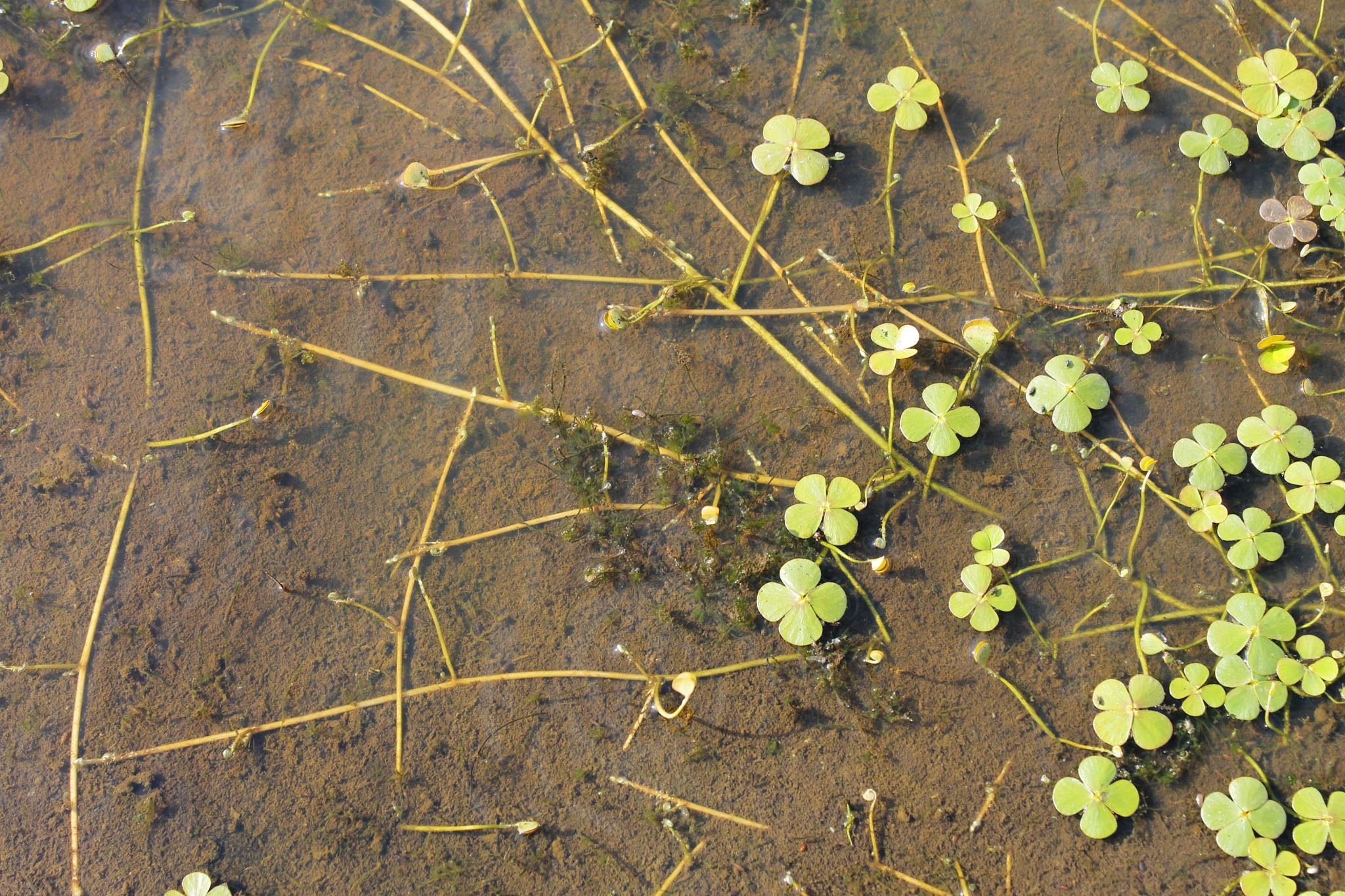
A strawberry stolon.
In the world of gardening and botany there are various types of concepts that are unknown to many and others as well known to others. Often we can know what we are driving but we do not know its name or the function it fulfills for the plant or the rest of its surroundings.
For the one who has never heard of what are stolons or what are they for, just keep reading.
What are stolons?

Marsilea mollis // Image - Flickr / Patricio Novoa Quezada
Stolons are a type of stem that plants have that are usually born at the base of the main stems. These are creeping stems that develop on the surface of the soil or even under it. There are many plants that stolons have. They are weaker stems that are crawling on the ground and at the same time they are developing new roots with which they will produce new plants.
A well-known example of a plant that has runners is strawberry and mint. The strawberry has small stems that creep along the ground and that, in turn, generate other roots for the growth of new plants.
What are stolons for?
Like any part of a plant, stolons fulfill their own function. The stolons have several sections and are divided into parts. In each of the sections of the stolon is where the development of the new plants takes place. The stolons are those that make vegetative reproduction. This is a type of reproduction in which the seeds do not intervene.
Therefore, the function of the stolons is to ensure that the plant reproduces little by little and spreads throughout the land. The longer the stolon, the more sections it will have and therefore the more it can be reproduced.
What are the plants that reproduce by stolons?
There are many plants that can be reproduced by stolons, much better than by seeds. Some of them are:
- Tape // Image - Flickr / Maja Dumat Follow
- Tarragon // Image - Wikimedia / Cillas
- Purple clover // Image - Wikimedia / Maja Dumat from Deutschland (Germany)
- Violeta
- Tape: it is a herbaceous plant that reaches a height of up to 30 centimeters. Its leaves are green or variegated, tapered. The flowers, which bloom in summer, are small. See file.
- Tarragon: it is a herbaceous plant that develops stems between 60 and 120 centimeters high. Its leaves are green, and it blooms during spring. It is widely used in cooking as a condiment. See file.
- Strawberry: it is a perennial herbaceous plant that reaches a height of 20 centimeters. Its leaves form a basal rosette, and are trifoliate, green in color. In spring it blooms, producing little white florets about 1 centimeter in diameter. The fruits, that is, strawberries, ripen in summer and are edible. See file.
- Peppermint: it is a perennial herb with green leaves and very aromatic. It grows to a height of approximately 30-35 centimeters. It blooms in summer, producing small, light-colored flowers. See file.
- Clover: it is an annual or perennial herb depending on the species and the climate characterized by having tri or quadrifoliate leaves (with 3 or 4 leaflets) of green or purple color. The flowers sprout in spring, and are spiky or umbellate. See file.
- Violeta: It is a small herbaceous 10 to 15 centimeters high, perennial, that has heart-shaped or reniform leaves of green color. The flowers are solitary, dark purple, and aromatic. See file.
As you can see, there is a great variety of stoloniferous plants that it is very likely that you have ever heard of. The fact that they are rather small makes them suitable for growing in pots, which is why they are ideal when you want to decorate a patio, a balcony, a terrace or even a corner of the garden.
What are rhizomes and stolons?
Both are stems that grow horizontally. In the case of rhizomes, we will always find them below the soil surface, while stolons are above it.. In addition, the rhizomes can give rise to new plants, even if they break; instead, stolons are ready-made plants, with their own root system which will grow even more if they are separated from the mother plant.
With this information you will be able to learn more about some plants and how stolons work, as well as how they differ from rhizomes.






Thank you very much it served me a lot
I'm very happy 🙂